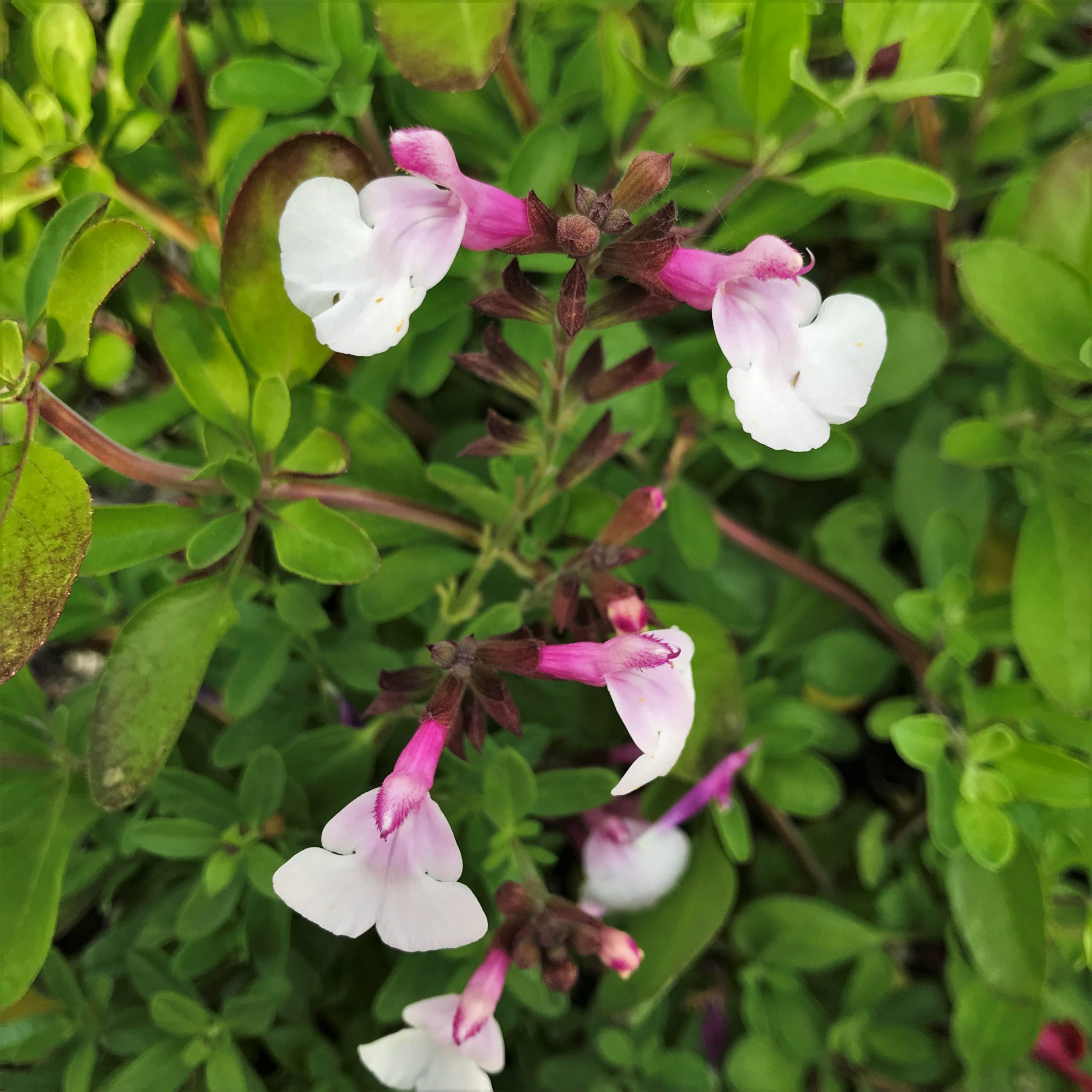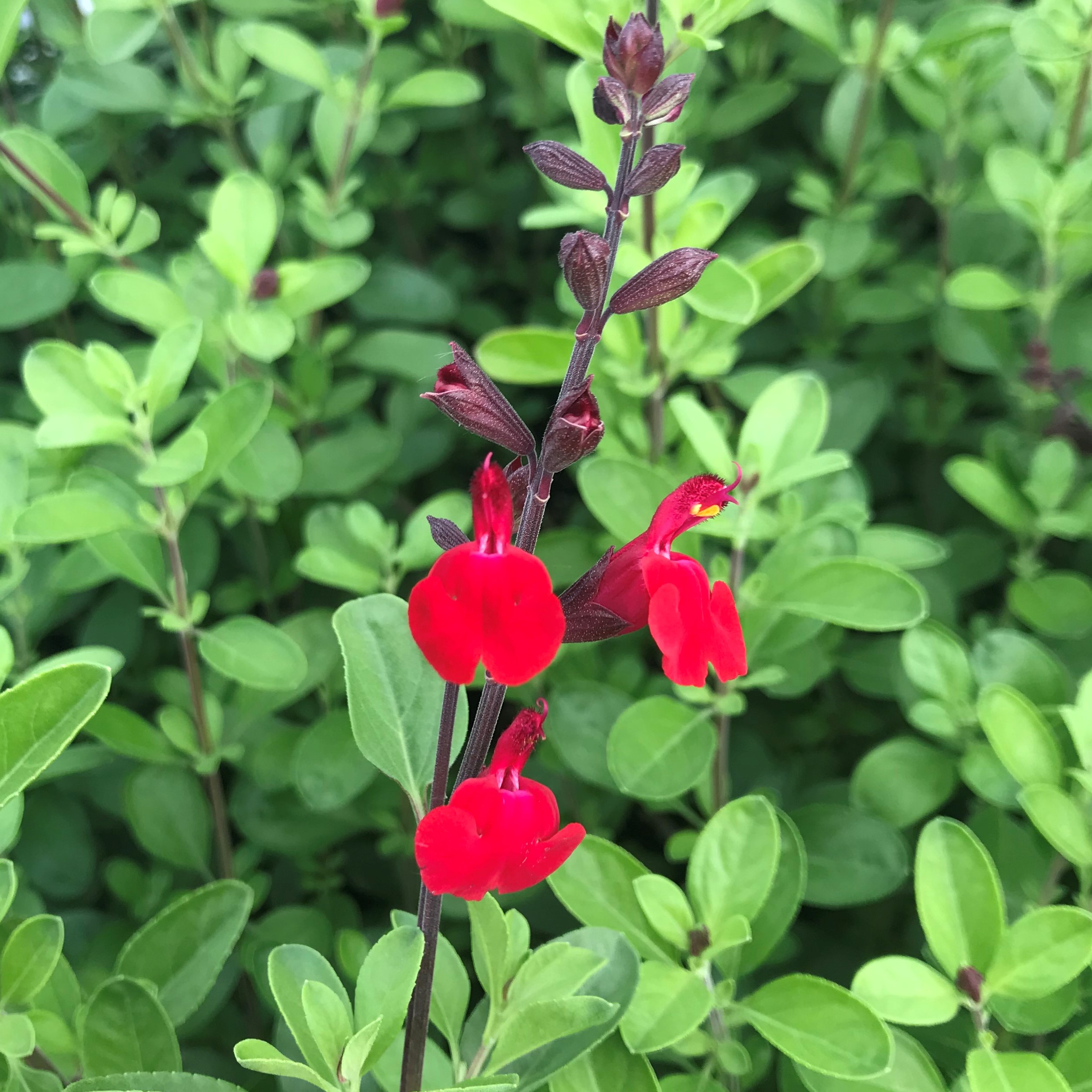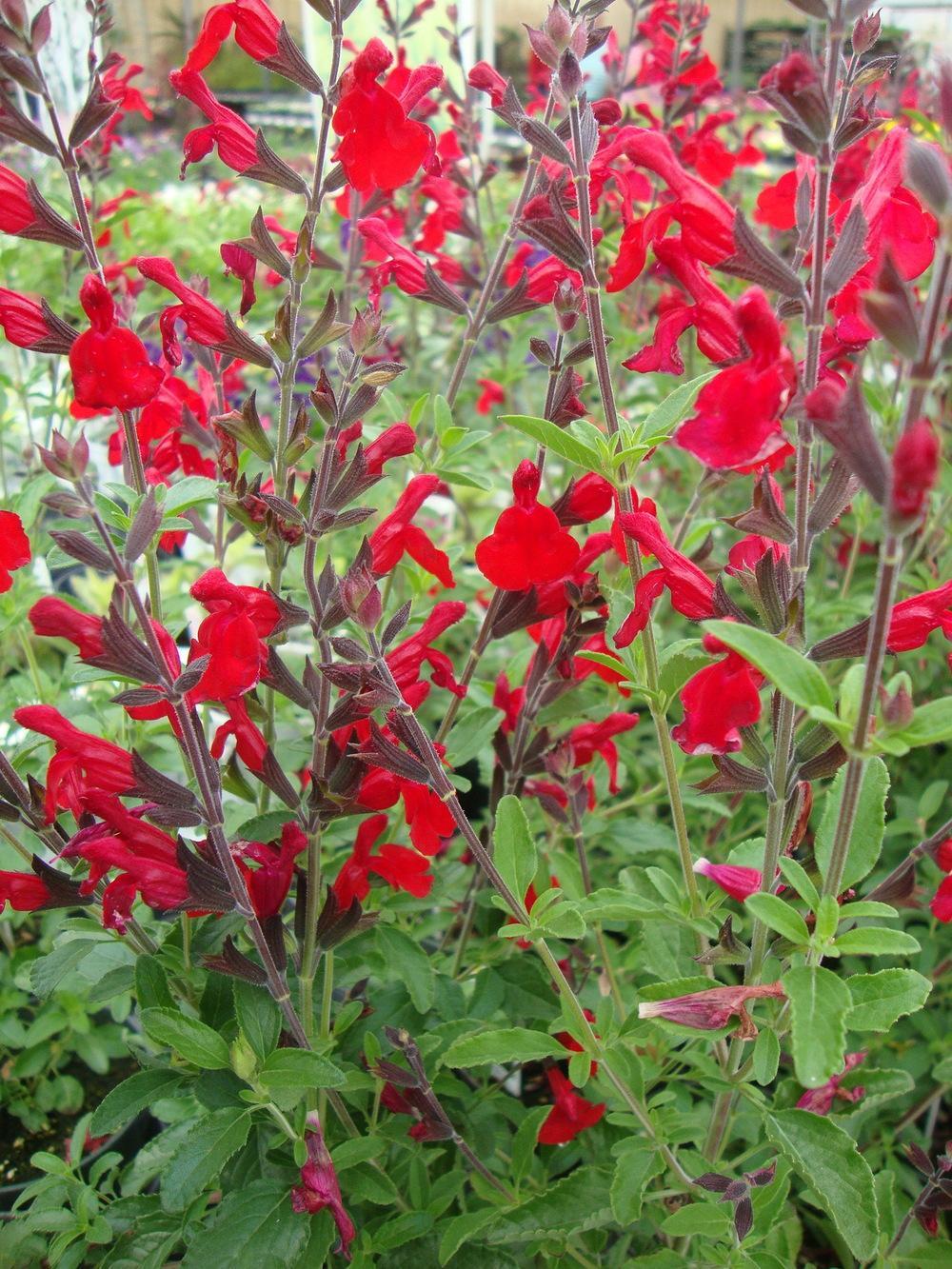
In a garden setting, prune back to 4 inches in late winter and again by one half in August to maintain a tidy shape, or allow to grow and spread or sprawl for a more natural appearance, with occasional pruning of old wood. Autumn sage is usually not winter hardy in Wichita Falls and the High Plains of Texas.

It is valued for its adaptability to garden soils, its very long blooming season and as a magnet for hummingbirds.

There are also numerous named hybrids with Salvia microphylla and other species, which are often referred to as "Salvia greggii types". Pale yellow, orange, salmon, fuchsia, purple, red-violet, burgundy, some with white variegation of leaves or flowers are commonly available. The normally red-flowered species also has white and pink forms and many named cultivars with slightly larger or smaller, rounder or more elongate leaves, varying growth habits from very upright to sprawling, and a wide range of colors in addition to those mentioned above. It has small, dull pale green, glandular, aromatic leaves. This plant is protected by patent number PP26362.Salvia greggii is a popular, usually evergreen sub-shrub growing natively in rocky soils in Central, West and South Texas, and Mexico. It is native to rocky slopes from western and central Texas into northern Mexico. Bright red, tubular flowers bloom on 4.5" tall, terminal spikes from late spring through fall. Salvia greggii, commonly known as autumn sage, Texas sage or red Chihuahuan sage, is a small deciduous sub-shrub that grows to 2-3 tall and as wide. 'Radio Red' is a compact selection of autumn sage that features red-flowers, a well-branched habit, and long blooming period. Autumn Sapphire sage ( Salvia reptans ‘P016S’) Perennial. It is happiest in a well-drained sandy or gravelly soil and kept on the dry side. Showy, 1 inch long flowers appear on 6-10 inch long spikes in the spring, summer and fall. Low maintenance is the mantra of this wonderful perennial, as it does not require deadheading, except when cut back in early spring. Its small, dark green leaves have a slightly sticky coating. It is a small, evergreen shrub that grows to about 3 feet tall and wide. Specific epithet honors Josiah Gregg (1806-1850), botanist and explorer, who first collected this plant on a trip through Texas to Mexico in the mid 1840s. Autumn Sage is native to Western Texas and parts of New Mexico and Southern Arizona.

The genus name Salvia comes from the Latin word salveo meaning "to save or heal", in reference to the purported medically curative properties attributed to some plants in the genus. Flowers are attractive to butterflies and hummingbirds. Two-lipped flowers bloom in whorls above the. Small, rounded, oval leaves (to 2' long) are aromatic when crushed. Best bloom occurs in late spring and fall, with sporadic bloom in the heat of the summer. Salvia greggii, commonly known as autumn sage, Texas sage or red Chihuahuan sage, is a small deciduous sub-shrub that grows to 2-3' tall and as wide. Flower color is usually a form of red, but may also appear as orange, pink, purple or sometimes white. Two-lipped flowers bloom in whorls above the foliage on 3-6" stems from June to October. Small, rounded, oval leaves (to 2" long) are aromatic when crushed.

Salvia greggii, commonly known as autumn sage, Texas sage or red Chihuahuan sage, is a small deciduous sub-shrub that grows to 2-3' tall and as wide.


 0 kommentar(er)
0 kommentar(er)
